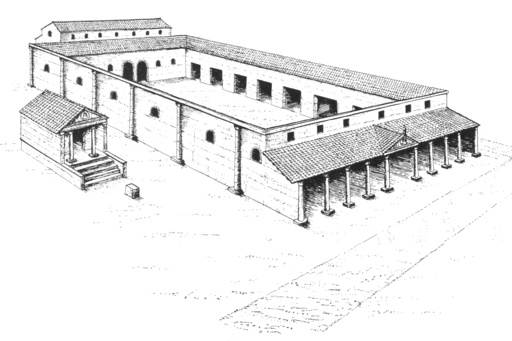
LONDON — Recent construction activities in London have revealed significant archaeological finds, shedding light on the city’s Roman past, which dates back nearly 2,000 years. Amid efforts to make way for a new 32-story office tower, archaeologists have discovered the remains of a Roman basilica that once served as a vital part of ancient Londinium.
Excavations conducted at the site of 85 Gracechurch St. uncovered substantial remnants of walls and foundations made from flint, brick, and ragstone. These structures, with widths reaching up to 1 meter (over 3 feet) and depths of 4 meters (13 feet), date back to the period between 78 and 84 A.D. This timeframe falls roughly three decades after the Roman conquest of Britain and about 20 years following the raid by Boudicca, the Celtic warrior queen, on the early settlement.
According to Sophie Jackson from the Museum of London Archaeology, this find is considered one of the most notable discoveries of recent times in the historic City of London—the financial district that marks the city’s oldest quarter. The basilica is believed to have been part of the forum, the core location for social, political, and commercial activities in Roman London, a place where the populace gathered to shop, socialize, seek justice, and stay informed about political matters. The remains are thought to belong to a tribunal—a designated area within the forum where crucial decisions regarding city governance were made.
“It’s the beating heart of the city,” commented Andrew Henderson-Schwartz, head of public impact at the Museum of London Archaeology. He emphasized that this discovery symbolizes the power and authority of Roman rule, showcasing early urban investment and development in London.
Hertshten Properties, the developer behind the new tower, has committed to integrating these archaeological findings into their project plans and will feature them in a visitor center for public engagement. Henderson-Schwartz remarked on the remarkable preservation of the basilica’s foundations, indicating an extraordinary level of historical integrity, and hinted that further excavation could yield answers to questions surrounding why the original forum was only operational for a mere 20 years before being superseded by a larger version that functioned for three centuries until the fall of Roman authority.
Such archaeological endeavors in the UK are commonplace, with property developers required to engage with archaeologists during their planning phases. Past finds have included items ranging from Saxon jewelry to medieval artifacts, such as ice skates, as well as skeletal remains from victims of the 14th-century plague.
This recent discovery enhances the limited remnants of Roman London that the modern city still displays, including a fragment of the original city wall, an amphitheater section beneath the Guildhall, and a temple dedicated to the god Mithras, located beneath Bloomberg’s contemporary headquarters.
Henderson-Schwartz pointed out that while there are numerous archaeological points of interest scattered throughout the city, this specific site effectively serves as a pivotal connection among them all—a fundamental area that represents Rome in London, where critical historical decisions were enacted.

